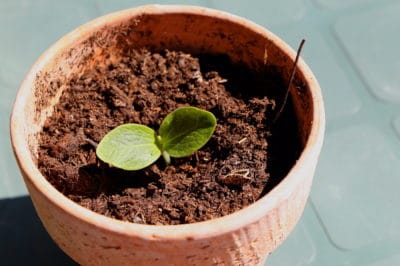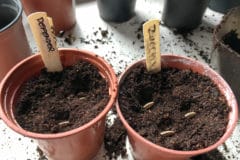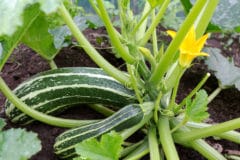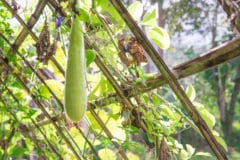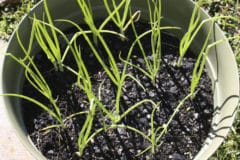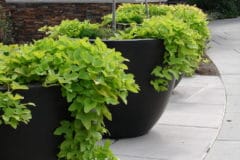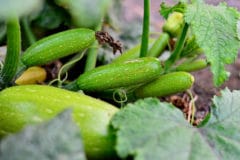Choosing the Right Variety
While there are many varieties of zucchini to choose from, not all of them are well suited for container growing. Some grow into shrubby bushes 4 feet (1.2 meters) or more across, and others prefer to climb or sprawl, which is troublesome for a backyard patio! Instead, look for ‘compact’ varieties like these:
- Venus
- Contender
- Patio Star
- Bush Baby
- Raven
- Caserta
- Summer Green Tiger
Choosing the Right Container
Though compact zucchini plants are smaller than their garden planted counterparts, they still require space to grow and thrive. Zucchini are also “heavy feeders,” which means that they need plenty of nutrients in their soil and enough room for the root system they need to collect them.
Choose a container with at least a 5 gallon (18.9 liter) capacity. Containers made of plastic, metal, or pottery all work well, but remember that they should be able to stand up to a bit of wear and tear. Choose a sunny location for your planter and get it into position before filling it, as it will quickly get too heavy to move easily.
Once your container is in place, add a layer of gravel or medium-sized stones over the bottom, being sure not to block the drainage holes. This will improve drainage in your planter, preventing rot and fungus. On top of the gravel, add a good quality potting mix, preferably one containing compost and peat moss.
Plant two or three zucchini seeds according to package directions. Thin these down to one once the first leaves appear and you can choose the most vigorous plant. Alternatively, you can plant a single zucchini seedling, taking care not to disturb the roots. Water well, and you’re off to a good start!
Troubleshooting
Container grown zucchini tend to have fewer issues with diseases than garden plants. Potting soil removes the issue of soil-borne bacterial and viral infections. You can reduce the likelihood of fungal diseases by always watering at soil level, and watching for soggy soil which might indicate poor drainage.
Pests also tend to be less troublesome, as the worst offenders—like cucumber beetles—often overwinter in the soil and start their assault first thing in the spring. Some pests can still be a problem, however, so keep an eye out for holes or discoloration in your plant’s leaves. If you notice pest damage, prompt treatment can usually help.
